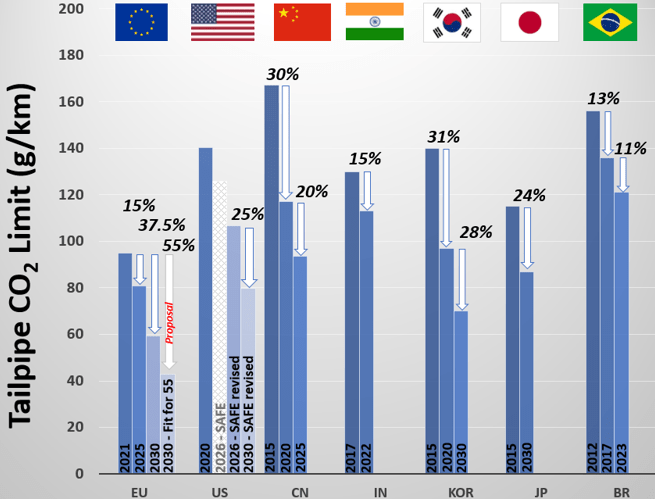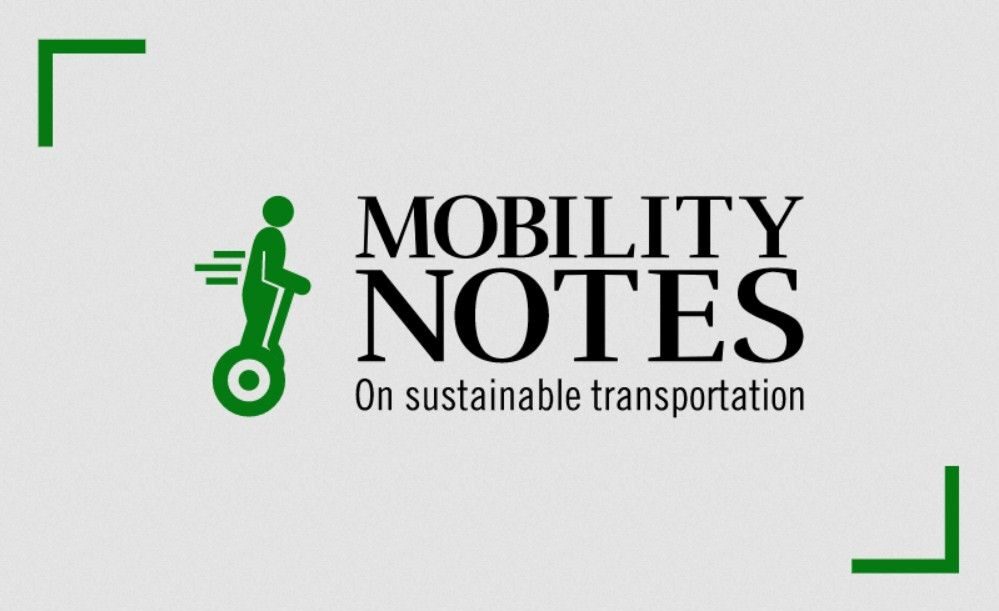Electric and hybrid penetration by 2030 based on new CO2 targets
What’s changing with fuel economy standards?
The European Union has proposed changes to the CO2 tailpipe limits for light-duty vehicles as part of the “Fit for 55” package.
For 2030, here are the revised targets:
Passenger cars: Current 37.5% reduction to be replaced with a 55% reduction, versus 2021 levels
Vans: 31% replaced by 50% reduction versus 2021 levels.
Also proposed is a ban on the sale of any new light-duty gasoline or diesel vehicle beyond 2035.
In the US, the Biden administration is revising the light-duty vehicle economy “SAFE” standards. Current EPA standards require a 1.5% reduction each year, while California had struck a voluntary deal with a few OEMs for a 3.7% reduction. Here is a possible scenario:
US EPA aligns with California for a 3.7% reduction from model year 2023 – 2026
For model years 2027 to 2030, the standards will get even tighter, perhaps a 6 – 7% reduction each year.
Biden has also signed an executive order setting a target of 50% electrification (including plug-in hybrids and fuel cell vehicles) by 2030.
Note the words “proposals, scenario, possible” etc. peppered throughout – much of the above is uncertain but one thing is sure, we are looking at significant tightening of fuel economy standards in the two major automotive markets.

Other recent posts
NOx emissions inventories – Role of improved HD ICE technologies
![]()
A new in-use emissions study on heavy-duty vehicles shows that both conventional diesel and alternative fuel vehicles certified to the 0.02 g/bhp-h standard can meet future EPA NOx limits even in day-to-day operation.
Conference Summary – SAE WCX 2025
![]()
A summary of the “SAE WCX 2025” conference held in Detroit.
IRENA Renewable Energy Capacity Statistics 2025
![]()
According to the latest report from IRENA, 2024 saw the largest increase in renewable capacity, accounting for 92.5% of overall power additions.
Like it ? Share it !

